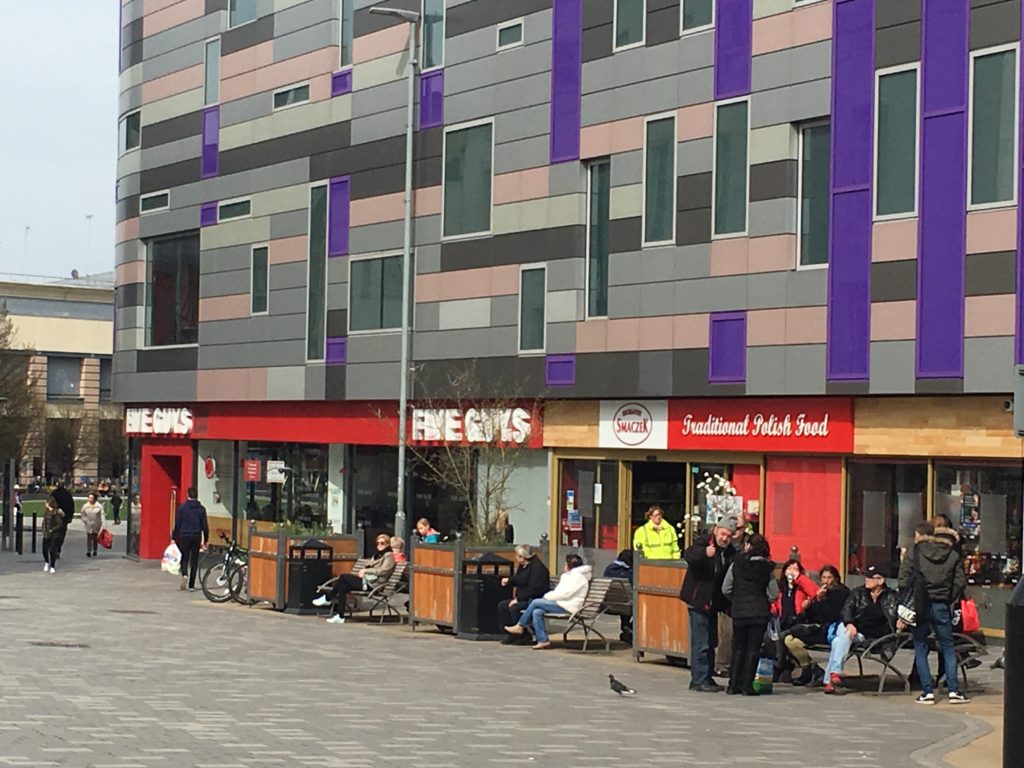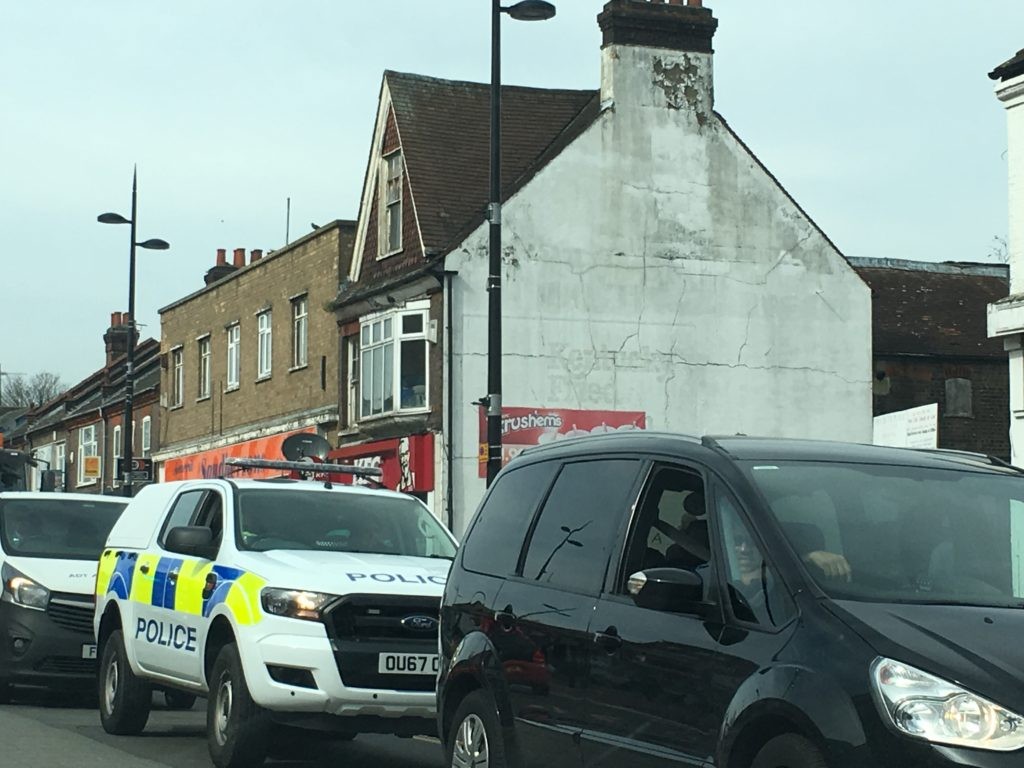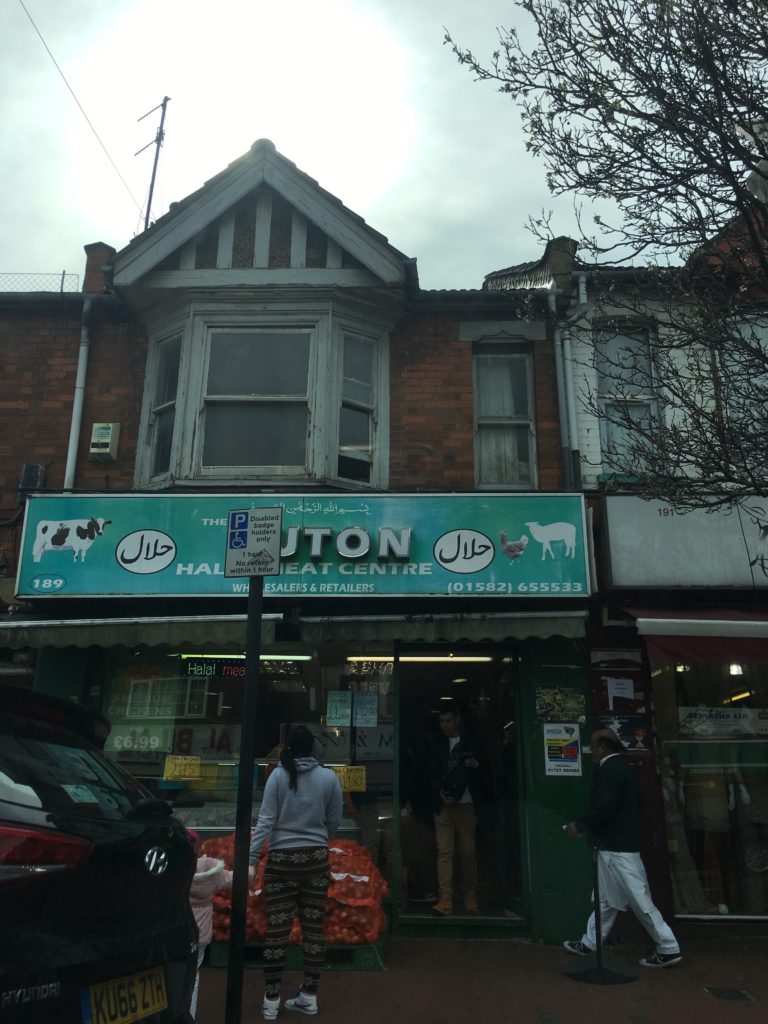HOPE not hate uses cookies to collect information and give you a more personalised experience on our site. You can find more information in our privacy policy. To agree to this, please click accept.
“It gets a bad press – it’s never going to be at the top of people’s places to live but it’s nowhere near as bad…
“It gets a bad press – it’s never going to be at the top of people’s places to live but it’s nowhere near as bad as people think it is,” says Keith Whitwell, an Australian artist who’s been living in Luton for the part 30 years.
Luton is a working-class town with a population of 216,000, a major airport and an unfortunate tendency to feature in extremism-related news.
A former resident was part of an Islamist fertiliser bomb gang that planned to blow up a shopping centre, Stephen Lennon, former head of the English Defence League (EDL) was born there and the so-called 7/7 bombers who killed 52 people on London’s transport routes in 2005 took the train to London from Luton on the day of the attacks.
Nestled between more affluent towns, Luton struggles with drugs and gentrification. Millennial Londoners are increasingly picking Luton to settle in as property prices in the capital drive them out. But for more than a decade, Luton’s reputation has been linked to extremism instead, with countless journalists focussing on the town through the lens of failed integration.
Walking around Luton and asking about its reputation, people were quick to say it didn’t reflect what the town is actually like. “If Tommy Robinson [Stephen Lennon] wasn’t born here and the 7/7 bombers hadn’t travelled through here, we’d just be another British town dealing with the same issues every town faces,” one Lutonian told me on the street.
Fatima Rajina, a British Bengali Muslim, is both a school teacher in Luton and a teaching fellow at SOAS University in London. She points to the train station as she shows me around the town, “The 7/7 bombers walked through this bit here and that image was everywhere on the news. I was in sixth form. I remember just having finished my AS levels, and my friends and I, we just knew shit was going to kick off.”
Fatima’s grandparents moved to Luton in the 1960s, her grandfather working in a Vauxhall car factory before most of them closed in 2002. She, like many Lutonians, is frustrated by the portrayal of the town in the news and documentaries such as BBC 3’s “My hometown fanatics” which focused on the two extremes: the EDL and Al Muhajiroon, an IS and Al Qaeda supporting group.

“The Bury Park mosque is where my uncles pray and they were the ones who kicked out Al Muhajiroon, telling them not to ever turn up there with their leaflets again – local people have fought these people from the streets and it’s very much our community that is tackling this,” she says. “But then as a schoolteacher, I hear young people saying Luton is a “shithole” and I’m frustrated because they themselves have internalised what people have said about their town.”
One woman said she had a daughter working in London who always gets a mixture of grimaces and pitying looks when she explains that she’s from Luton: “She told me, ‘I’m not sure I would have gotten my job if they had known I was from Luton first’.”
“Integration is such a loaded them – there’s an automatic assumption there’s something not quite right in the community – and people often fail to recognise integration is a two-way street,” says Imrana Mahmood, a teacher and creative producer. “Things have improved in Luton and even though the perception from outside is that Luton is segregated, if you talk to people here, it’s not like that at all.”
Her words are echoed by various people – from white to Asian, Muslim to Sikh – everyone seems defensive about Luton’s reputation but when it comes to integration, opinions vary.
Balal, a bus driver waiting at the station tells me his community still needs to open up more as they are “not very educated yet”. “The Asian community want everything in the UK but some are not prepared to adapt – I’m not saying to forget our culture, but some people are narrow-minded,” he says. “If you live in this country, you need to integrate.”
A white woman tells me she’s uncomfortable with people who complain about integration or special treatment of minorities so she just “doesn’t pay attention”. “Look at the royal family, even they’ve become more mixed, that’s the way it’s going to go.”
Keith says he understands why some people are uncomfortable with the large minority communities in their town. “I go to Eastern European bakeries and shops and can’t read anything in the shop because everything is written in Polish, for example, but I find them really exciting places to be in,” he says.
Keith doesn’t feel Luton has changed much in the decades he’s lived here as he says people have always been interacting on the ground. “Everyone I know, from the rugby club, the cricket club and the pub – it’s always been a mixture of people,” he says.
Keith believes the evolution of local communities is natural: “When I first came here the area was very Irish and they were a close-knit community – I don’t see any difference between that and some communities today.”
Walking around Bury Park is a colourful experience. This small area of Luton with terraced houses, south Asian shops and vegetable stalls has been scrutinised by the police in the past and is now regularly patrolled, especially on Fridays.

Bury Park was accused of being a “no-go zone” by Britain First. Former Prime Minister David Cameron even chose a Bury Park school to unveil his counter extremism strategy. Fatima’s father owned a restaurant in Bury Park for many years and she still has family working there. She describes the various histories of the shops with the familiarity of someone who has walked these streets for generations.
As we pass a house with a prominent security camera on a street corner, I’m airily told it used to have a huge British flag hanging in front and is owned by “racist people”. “Everyone knows – they will never hurt you, but you know they’re racist,” says Fatima. “I do get a bit scared if I’m coming home late from the station and have to walk this street.”
Despite the melting pot of ethnicities (including white British) immediately obvious around Bury Park, Imrana says there is a perceived fear among some that white people are unwelcome. There is a football club in the area and I’m jokingly told that if there are more than five white people together in Bury Park, it must be because of a football match.
During an exhibition by photographer Peter Sanders on positive representation of Muslims, Imrana talked to an older white couple. “From the outset, I could see he had probably never spoken to a Muslim before,” explains Imrana. “He said ‘you people don’t integrate’ and spoke about how the British had to sacrifice their lives during World War 2 and then ‘when you people came you wanted to change things’.” (As a matter of simple fact, nearly 80,000 soldiers from the Indian subcontinent died for Britain during the war.)
Imrana says she’s noticed this perception of Muslims mostly through her work and has gone out of her way to challenge it.
When I ask Fatima about integration, she laughs and tells me she was at a café in Bury Park with a white friend yesterday. “We sat there for an hour and people coming in were speaking Urdu, Bahari, Bengali, Punjabi and English – that for me is integration,” she says. “People were code switching, going from one language to another, the children with their own form of slang.”
Fatima stresses that integration should not only be centred on people from ethnic minorities interacting with white people. She points out a Halal meat shop in Bury Park, telling me there is usually a long queue made up of a mixture of people, from Afro-Caribbean to Eastern European to Asian to white. “People who walk these streets are interacting, building friendships, recognising each other so it’s there, on the ground, at grassroots level but that’s not something the officials are interested in.”

Speaking English has increasingly become emphasised as a method of integration. Two years ago, David Cameron said more Muslim women should learn English and Dame Louise Casey, who reviewed community cohesion and extremism for the government, said this year that everyone in the UK should speak English by a set deadline.
But some Lutonians don’t think this a sensible measure. “I don’t think there’s any way to force that. My friend is Sri Lankan and his grandmother doesn’t speak English – she refuses – and there’s no way in the world you’re going to force her,” says Keith. “These things take time, you have to focus on the children.”
Fatima agrees, saying it’s a “very colonial way of looking at ethnic minorities”. She says there is a perception that you are not contributing to the country if you don’t speak English.
When asked about issues with integration, several pointed to the negative impact of government cuts on communities. “Integration in this country is such top down approach, especially with austerity. If you’re cutting funding to areas seeing problems in society, you’re part of the problem,” says Fatima.
Funding cuts are reducing public spaces available for people to come together and meet as well as reducing opportunities for the youth.
Daniel, a young white man who works at a travel centre, doesn’t understand why integration is considered the main issue in Luton: “It doesn’t really mean anything, you just have to not be racist – integration is not the problem here, it’s the drugs.”
Like in many other towns, drugs are a severe problem in Luton and have affected all the communities living there. Keith agrees. “Yes, we do have killings, but every single town has that. A lot of it is down to drugs, not down to cultural or racial differences.”
“When I pass by a school and see kids playing, no one really cares [about ethnic and religious differences], the kids don’t care. That’s my hope for the future,” says Keith.
Keith, who is half-Irish, says the same thing happened in Northern Ireland, where only a few families “care about the vendetta between the Catholics and Protestants because the kids who played together grew up without the same hate”.
Keith gives art classes in Luton and he says most people come in to have a chat and coffee as much as they come in to produce art. “When you get people out of their normal environment and interacting with other people, things change so fast.”

When asked what could improve community cohesion, he suggested drop-in centres where people could walk in and learn more about other communities.
Imrana created a book club that meets in Bury Park, initially for Muslim mums, that soon encompassed different cultures, religions and ages. She says it’s not “about tolerance because tolerance itself is a low bar to set, it’s about acceptance and love, and how we, despite our differences, work towards a common goal”.
But she warns that the constant need to “humanise” Muslims can be problematic when attempting to show “integrated minority communities”. “We need to be accepted for who we are and the media doesn’t help by linking anything negative happening in Luton to its extremism narrative,” she adds.
Michael Singleton, a retired teacher and Chair of Churches Together in Luton, agrees with Imrana’s approach, stressing it is important that community work isn’t just done by faith leaders and activists but by everyday people interacting positively.
One Lutonian suggested more “top-down” efforts to tackle diversity problems in companies through unconscious bias training but also by addressing the middle management glass ceiling for black and Asian people.
Nearly everyone I spoke to pointed to schools as a way people are interacting organically. “No one is forcing the kids to interact with each other, but it’s happening naturally.” says Fatima.
However, schools are not always mixed due to admission rules and catchment areas and Fatima admits this limits interaction between ethnic minority and white students.
Predominantly white areas such as Farley Hill have predominantly white students while areas with a certain ethnic minority will have schools dominated by that ethnicity. “So the government and local council policies on how you admit pupils in schools also determines interactions,” Fatima adds.

Right-wing comic Kearse saves the worst material for his anonymous Telegram account HOPE not hate has identified an anonymised Telegram account belonging to the GB…